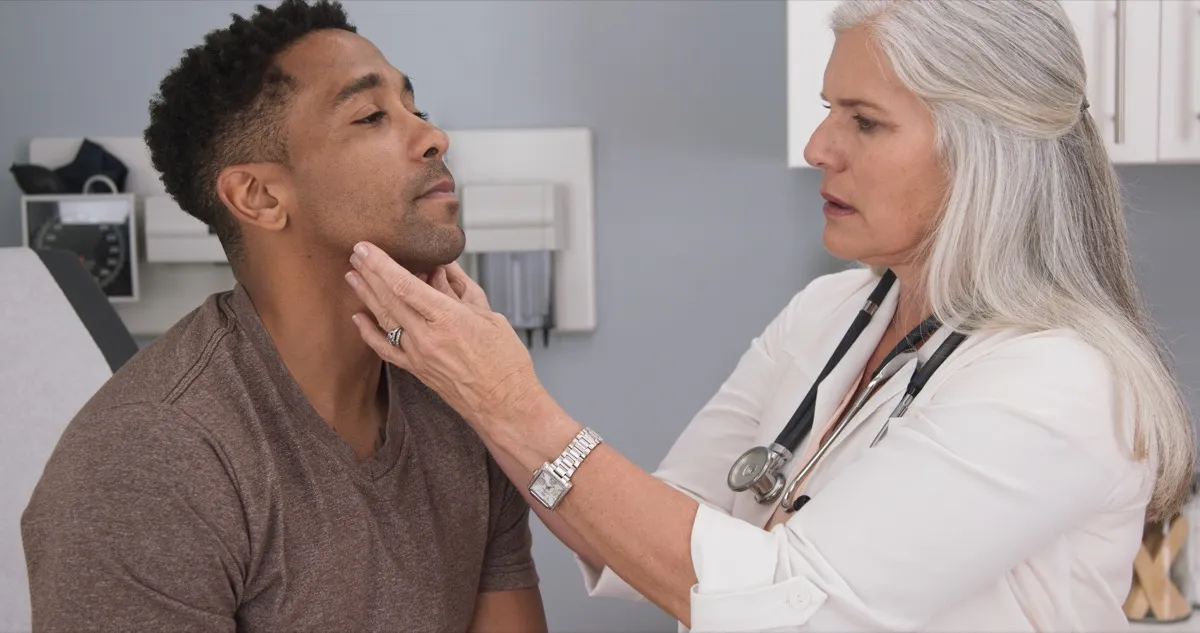This Is How Often You Should Really Be Cutting Your Nails
Not cutting your nails often enough can lead to various health issues.

There are some hygiene tasks that are second nature, like showering consistently and brushing your teeth every day. Then there are the hygiene tasks, like cutting your nails, that can easily be forgotten. But should you be putting off trimming your nails? According to experts, not really: They say you should actually be cutting your nails every week. Read on to find out why this hygiene task is important to keep up with, and for more essential body care guidance, This Is How Often You Should Really Be Washing Your Hair, Experts Say.
There is a lot that can be left up to personal preference when it comes to cutting one's nails, but if you want to ensure you don't get stuck in a unhealthy situation, board-certified podiatrist Nelya Lobkova, DPM, and licensed physician Leann Poston, MD, recommend cutting your fingernails every week. On the other hand, Esteban Kosak, MD, a medical doctor and researcher with Symptoms Care, says you go could go as far as waiting every few weeks to cut them—but waiting comes with heightened health risks.
"When you don't cut your nails often, they can easily get damaged and break, and are more likely to harbor dirt and bacteria that can potentially spread infection," Kosak explains.
According to Lobkova, fingernails grow an average of 4 millimeters per month, and Poston says that your "dominant hand's nails will grow faster than your non-dominant hand." However, your toenails actually grow at a slower pace—about 2 millimeters per month, according Lobkova. Toenails, therefore, can be trimmed less often, but still need maintenance every few weeks.
"You are more prone to skin infections such as cellulitis and fungal skin infections if the toenails are not trimmed regularly," says Bruce Pinker, DPM, a foot specialist and owner of Progressive Foot Care. "Also, if you don't cut your toenails often enough, it can be difficult to walk, as the toenails will grow around the toe, leading to pain and discomfort."
But it's not just how often you trim your nails—it's also how you're doing it. Poston says you should use your personal nail clippers and "cut your nails so they are even with the ends of your fingers or toes." Avoid rounding off the edges of your nails when cutting because you're "more likely to get ingrown toenails as the edge of the nail pushes into the skin."
As it turns out, cutting your nails regularly may not only help you steer clear from skin or nail health problems. Lobkova says the "nails on our fingers and toes could demonstrate a pattern that is a sign of disease or other abnormalities in the joints, bones, skin, and major organs." So regularly checking your nails and seeing if there are any changes or difficulty in cutting them can help determine if there may be any underlying health concerns at play. Keep reading to learn some of the health problems your nails can detect, and for other hygiene concerns, This One Thing Could Finally Fix Your Smelly Feet, Study Says.
1
Heart Problems

Blue nails are a serious sign that something could be up with your health. According to Heathline, "blue fingernails are caused by a low level or lack of oxygen circulating in your red blood cells." This means you could be experiencing a number of heart problems, including congenital heart disease, Eisenmenger's syndrome, or congestive heart failure. And for more ways to keep your heart healthy, discover The Worst Thing You're Doing to Your Heart Right Now.
2
Lung Disease

A pivotal 2004 study published in American Family Physician found a connection between your nails and your lungs. Researchers concluded that clubbing of the nails—which is where the tips of your fingers enlarge and your nails curve downward toward them—could mean you have pulmonary disease. And for more useful information delivered straight to your inbox, sign up for our daily newsletter.
3
Thyroid Problems

Dry, brittle nails aren't just a cosmetic concern. According to the American Academy of Dermatology, "thick, dry, and brittle [nails] with visible ridges" can actually be a sign of thyroid disease. And for more symptoms to look out for, make sure you know these Subtle Signs of a Thyroid Problem Hiding in Plain Sight.
4
Skin Cancer

Did you know that you can actually get melanoma under your nails? The American Osteopathic College of Dermatology says this specific type of skin cancer often shows up as "brown or black discoloration found within the nail." It also typically only affects one nail, "particularly of the thumb, big toe, or index finger." And for more cancer concerns, You Should Get Screened for This Cancer Earlier Than You Thought.





















